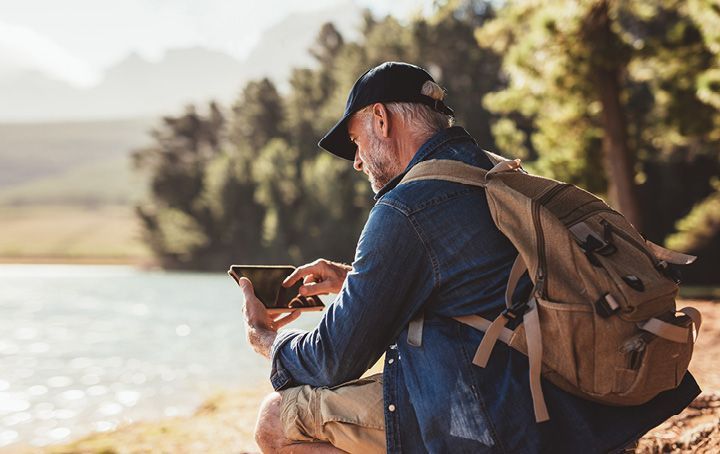SMSF taxable assets double, is your fund affected? Is your fund affected? New research has shown the transfer balance cap and reduction of tax concessions for transition to retirement pensions have achieved their policy outcome and made more SMSF assets taxable.
ASIC enforcement action on SMSF auditors over independence. ASIC has released information on its enforcement action against over 100 SMSF auditors (some referred to it by the ATO for various breaches including not meeting independence requirements, not complying with auditing standards, not reporting non-compliance, and not meeting the fit and proper person requirement).
ASIC recommends SMSF reforms including trustee education. As a part of hearings into ASIC’s oversight functions, the regulator presented the Parliamentary Joint Committee on Corporations and Financial Services with a range of policy solutions to be considered to remedy deficiencies identified in the SMSF space from its recent reports.
Business real property can be moved into your SMSF. Transferring a commercial property into an SMSF can be a great way to build retirement savings and take advantage of the concessionally taxed SMSF environment. But when acquiring property from a related party, it’s vital the property meets the “business real property” test.
Lending to your SMSF? Thinking about a gearing strategy for your SMSF? It’s possible to borrow from a related party, but you must structure the loan terms correctly or else face significant tax penalties.
Limited recourse borrowing arrangements (LRBA) and SMSFs. Limited Recourse Borrowing Arrangements (LRBAs) allow an SMSF to borrow money for the purchase of a single asset (or a collection of identical assets that have the same market value) to be held in a separate trust.
LRBA changes may inadvertantly hinder SMSF gearing. Limited recourse borrowing arrangements have allowed many SMSFs to successfully invest in assets they otherwise would not have been able to acquire.
Setting up a SMSF, ensure it meets the sole purpose test. Setting up your own self-managed super fund (SMSF) can be a complex task even before you seek registration with the ATO. It’s important that the SMSF be set up correctly for the sole purpose of providing retirement benefits for their members.
SMSF allows you to prepare for your retirement your way. A self-managed super fund (SMSF) is a way to prepare for retirement that gives you more control and freedom of choice over your investments than other types, such as retail or industry super funds.
SMSF and working overseas, for how long are you away? When you go overseas to work or travel for an extended period of time, ensuring that your SMSF stays complying is probably the last thing on your mind.
SMSF auditor appointments, are you still compliant? Are you the trustee of an SMSF? Then you should know all about the obligation to appoint a registered auditor to audit your SMSF every year.
SMSF contraventions, is compliance putting your fund at risk? SMSFs can be a great investment vehicle for those prepared to get the compliance side of things right.
SMSF discretionary powers override wills with death benefits. Death of a family member is often a difficult time, but if the deceased was a member of SMSF, complications from trustee arrangements and payment of the death benefit can make a difficult time even worse for the family members.
SMSF investment strategy compliance, ATO to check on over 17,000 SMSFs that are heavily invested in one asset class will soon receive a “please explain” from the ATO to check whether they can justify their diversification risk.
SMSF investment strategy. While many trustees will know that self-managed super funds (SMSFs) are required to prepare and implement an investment strategy, what they may not know is that specific factors have to be considered in forming the investment strategy including the risk of inadequate diversification.
SMSF member and moving overseas? If you currently have an SMSF, you’ll need a strategy for managing your super to ensure your fund doesn’t breach any residency rules. Know your options and plan before you go.
SMSF membership may soon be able to increase to six members. A large member group in an SMSF creates a number of important planning issues that need to be carefully managed.
The sole purpose test is one the fundamental requirements for SMSFs to obtain tax concessions. It requires that the SMSF be maintained for the sole purpose of providing retirement benefits to its members or their dependents if a member dies before retirement.
SMSF sole purpose test and fractional investments. Previously, it was thought that any benefit provided directly or indirectly to members or related parties of an SMSF from an investment would contravene the sole purpose test. However, a Full Federal Court decision has re-framed the sole purpose test which will provide some flexibility to trustees on certain investments.
SMSF trustee, is a corporate trustee worth the extra expense? Setting up a new SMSF does involve some cost, and one of the decisions you’ll need to make is whether it’s worth paying to establish a new company to act as trustee.
SMSF trustees must watch their related party expenses. The tax laws that penalise uncommercial transactions between SMSFs and related parties are set to get tougher, with an SMSF’s expenses to come under the spotlight.
SMSFs differ from other funds so understand the differences. Insurance and dispute resolution might not be high on your list of things to consider when starting up an SMSF, but these issues do affect SMSFs differently to public offer funds. What will you do if a dispute arises between SMSF members, and what does taking out insurance in an SMSF practically involve?
SMSFs vs other types of funds, some issues to consider. For many people, SMSFs are a great option for building retirement savings, but they may not be suitable for everyone.
Sole purpose test is an area of concern for SMSF trustees. If you are the trustee of one of the approximately 577,000 SMSFs in Australia at the moment, there are some areas the ATO wants you to pay particular attention to including the sole purpose test, the in-house asset rules, unlawful schemes and arrangements, and dividend-stripping.
Three year audit cycle proposed for SMSFs by government. How often must your SMSF be audited? Currently it is every year, but the government has proposed to extend this to a 3-year cycle.
Valuing your SMSF assets, know the market value requirements. Recording the market value of your SMSF’s assets is an important trustee responsibility. But how do you prove “market value”, how often must you value assets and when do you need to hire an expert valuer?
Working overseas and the SMSF active member test – Part 2. This week we look at the active member test and how it may affect the complying status of your SMSF.

























